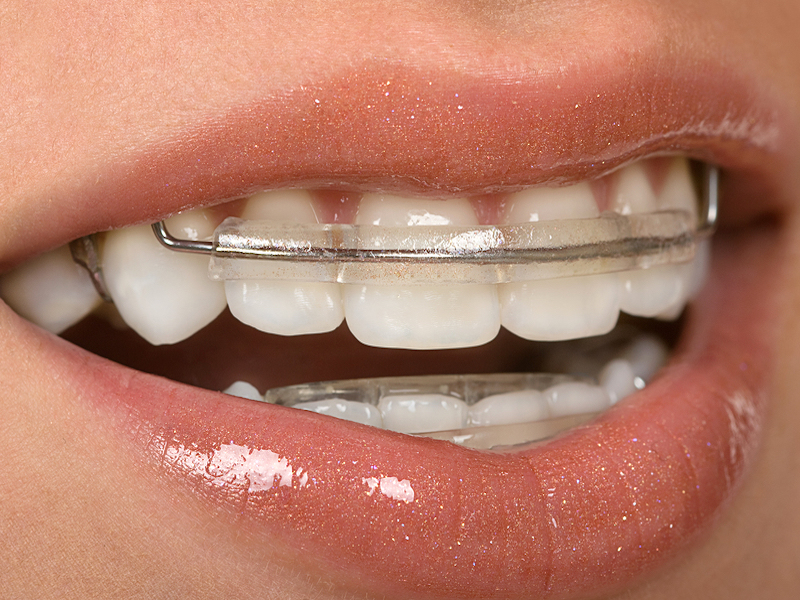Those dental braces you wore as a teenager really did wonders for your smile. Unfortunately, years of wear and tear and forgetting to wear that bothersome retainer have caused your teeth to move a bit, leaving you to wonder whether dental braces are necessary again. An orthodontic appliance known as a spring retainer may keep you from spending more time — and thousands of dollars — on yet another dental braces experience.
Spring retainers are a common orthodontic treatment for patients whose front teeth have slightly shifted. Most orthodontic retainers keep teeth in place after treatment — spring retainers are removable orthodontic appliances that not only preserve your teeth but can actually help make them straight again!
Dental Retainers v. Spring Retainers
Dental retainers are meant to prevent orthodontic relapse (when teeth shift out of place after dental braces are removed). Most orthodontic relapses happen to lower front teeth, where patients tend to disregard wearing a retainer. Originally designed to fix this problem, spring retainers are currently used to reverse the movement of both upper and lower anterior teeth. Spring retainers consist of a wire and acrylic frame that extends from cuspid to cuspid to force your four front teeth back into position.
There are several reasons your dentist or orthodontist may choose a spring retainer. Spring retainers often correct shifting teeth that result from patients who have neglected to wear their retainers. Adults who discontinued the use of a retainer years ago may also benefit from a spring retainer. In some cases, spring retainers are prescribed immediately following the removal of dental braces as part of your orthodontic dental treatment plan.
Types of Spring Retainers
The construction of a spring retainer is unlike most other retainers — instead of focusing on the here and now, a spring retainer’s design is based on the end result. First, an impression is made of your teeth and sent to a lab. From there, the teeth are cut from the model and shaped to appear straight. The spring retainer is made from the reconstructed set, which will push your teeth in the right direction as you wear it.
Spring retainers can also be modified to fit your various orthodontic needs. While spring retainers traditionally encompass your four front teeth, they can be combined with other orthodontic retainers to help maintain your smile. A Spring Hawley retainer is one common type of modified spring retainer used to preserve the placement of your back teeth while correcting your anterior teeth. Spring retainers may also feature a wire extension or acrylic extension, where parts of the retainer are extended beyond the cuspids for added retention and stability.
Finding the Spring Retainer for You
If your teeth are starting to shift, you’ll have to act fast! Spring retainers are not miracle workers — they are designed to move your teeth 1-2 mm and are only used for minor adjustments, such as rotating or tipping a tooth. They cannot move the roots or jaws and are ineffective in correcting extremely crooked or crowded teeth. The great news is if you qualify for a spring retainer, the treatment time is quick; many patients are able to straighten out their smiles in less than 6 months! Once your teeth are straight, you’ll continue to wear your spring retainer solely at night to preserve your smile.
For dental patients with only slight malocclusions, a spring retainer may replace the need for dental braces altogether! If you’re interested in correcting some minor imperfections but don’t want to commit to dental braces, you may be a candidate for a spring retainer. Talk to your dentist to find out.

